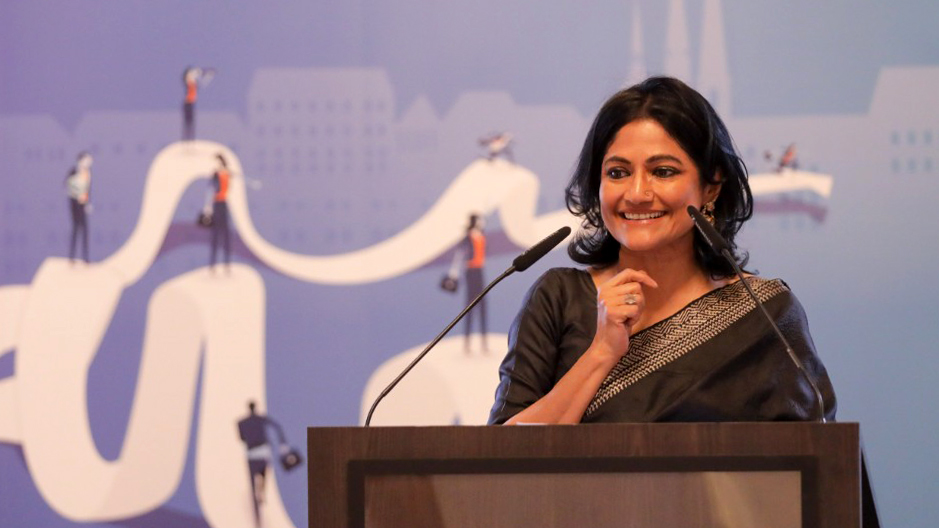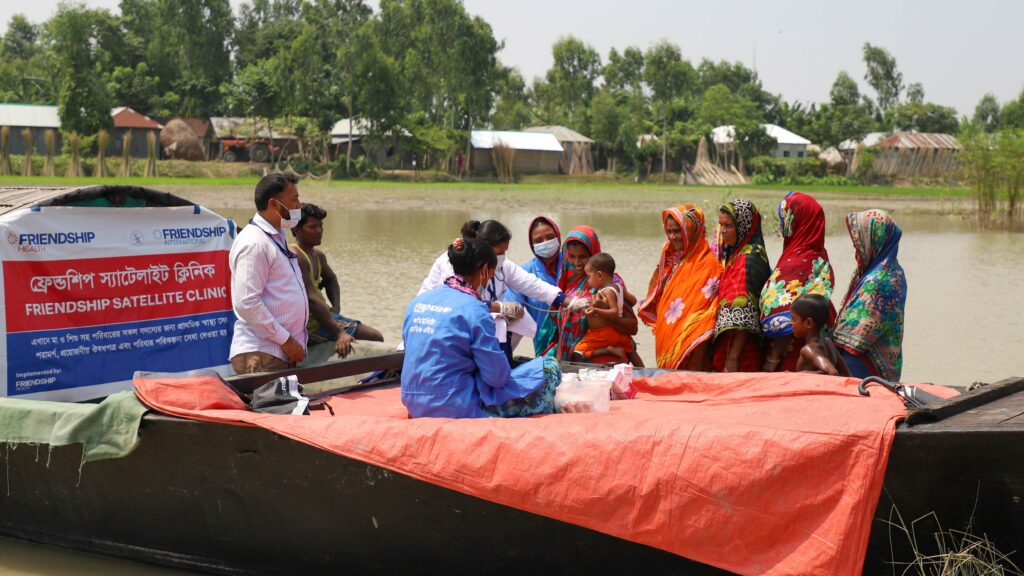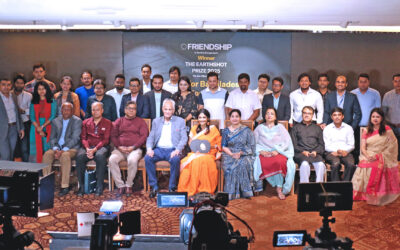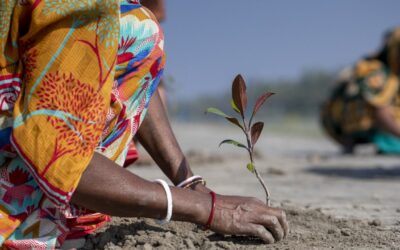
by Runa Khan,
7 April, 2025
When health fails, hope fades. Whether in a city centre or on a river island, when the body gives way—when pain becomes routine and healing remains out of reach—everything else collapses.
Livelihood, learning, dignity, even the will to dream. This is the harsh reality for millions across the globe. Sometimes it’s geography—people surviving on shifting chars or cyclone-battered coastal belts where no road or clinic exists. Sometimes it’s poverty—when even a fever goes untreated because the boat fare to the nearest medic could feed a family for a week. And sometimes it’s deeper still—a systemic absence of nutrition, clean water, rest, and knowledge. Often, it is all of these, together, compounding each other into crises. Without health, nothing else matters.
Health is not just about medicine—it is the foundation on which life is built. When malnutrition, poor sanitation, and unsafe conditions persist, education falters, livelihoods disappear, and futures collapse. Maternal health is especially critical, with care needed before, during, and after birth, because the well-being of mothers defines that of families. In climate frontline regions, where cyclones strike and land disappears, poverty deepens, salinity leads to miscarriages, and heat disrupts hormonal balance. To protect health, we must build systems: nutrition, hygiene, vaccination, and safe living environments—beginning from birth. Education, infrastructure, and awareness must all work together to ensure long-term well-being.

Education is also ‘health’. It helps people distinguish between what is safe and what is dangerous. For example, a girl married at 14 is at risk—and so is her child. In communities without formal education, recognising danger signs in pregnancy or understanding prescriptions becomes guesswork. Literacy enables hygiene, family planning, and disease prevention—the basics needed to stay well and raise healthy children.
Then comes design—often overlooked, yet deeply impactful. Stoves on the floor expose women to chronic respiratory disease and are fire hazards. The shortage of latrines spreads infection. Lack of lighting at night and unsafe footpaths lead to injury. From flood-resilient plinths to solar-powered villages, satellite clinics, homestead gardens, agricultural inputs, and dismantlable schools—these are not add-ons. They are essentials for survival in fragile settings. Disaster preparedness, too, must be built in—because saving lives often depends not just on response, but on readiness to protect both people and their livelihoods. The poor cannot afford poor solutions.
Understanding all of this—not in theory, but through experience—has been a journey of more than 23 years. A journey of learning, adapting, failing, and rising. And it began in the chars of Bangladesh, where healthcare was not just absent—it was unimaginable.

We started with one hospital ship, a team of 18 people, and no blueprint. Everyone had to do everything—from cleaning beds to translating for doctors. We learned as we went. The ship was a lifeline, but as needs grew, we expanded. Satellite clinics followed. Then came the Friendship Community Medic-Aides—local women trained to provide basic care at the doorstep. Today, the system comprises seven hospital ships, two land-based hospitals, over 535 satellite and mobile clinics, and 680 community medics. The mHealth digital platform powers this final tier, enabling FCMs to geo-locate, record, consult, and follow up with patients, ensuring quality and continuity even in the most remote huts.
From that first ship to a three-tier system, from 18 staff to a team of over 7,500, the journey has been one of trial, error, and humility. Today, Friendship serves over 7.5 million people annually through indirect reach, having delivered 23.4 million health services. Every intervention was born out of necessity. Behind every number is a face: a child once hidden due to a disability now attending school; a boy with clubfoot now running across a football field; a man who had lost his sight now threading a needle again after cataract surgery. These are not exceptions—they are the quiet revolutions that define progress.
And we did not walk this journey alone. Across the years, friends from all corners of the world have joined hands—and new friends have been made in the journey thus far—expert consultants, volunteers, donors, and local changemakers. They saw what we saw: not helplessness, but strength needing support. They came not to give charity, but to build solidarity. And through this unity, lives transformed through surgeries, telemedicine, health education, and the simple human act of showing up. Today, Friendship’s outreach includes cervical cancer screening and treatment—saving lives silently, through early detection and dignity-focused care.

Because ultimately, health is the thread. It runs through justice, opportunity, education, and survival. In the chars where we began, hope was once unimaginable. Today, it is real. It is not perfect. It is not complete. But it stands, built layer by layer by communities who chose to believe they were worthy of more. On this World Health Day, let us honor that belief. Let us build futures where health is not a dream but a guarantee.



